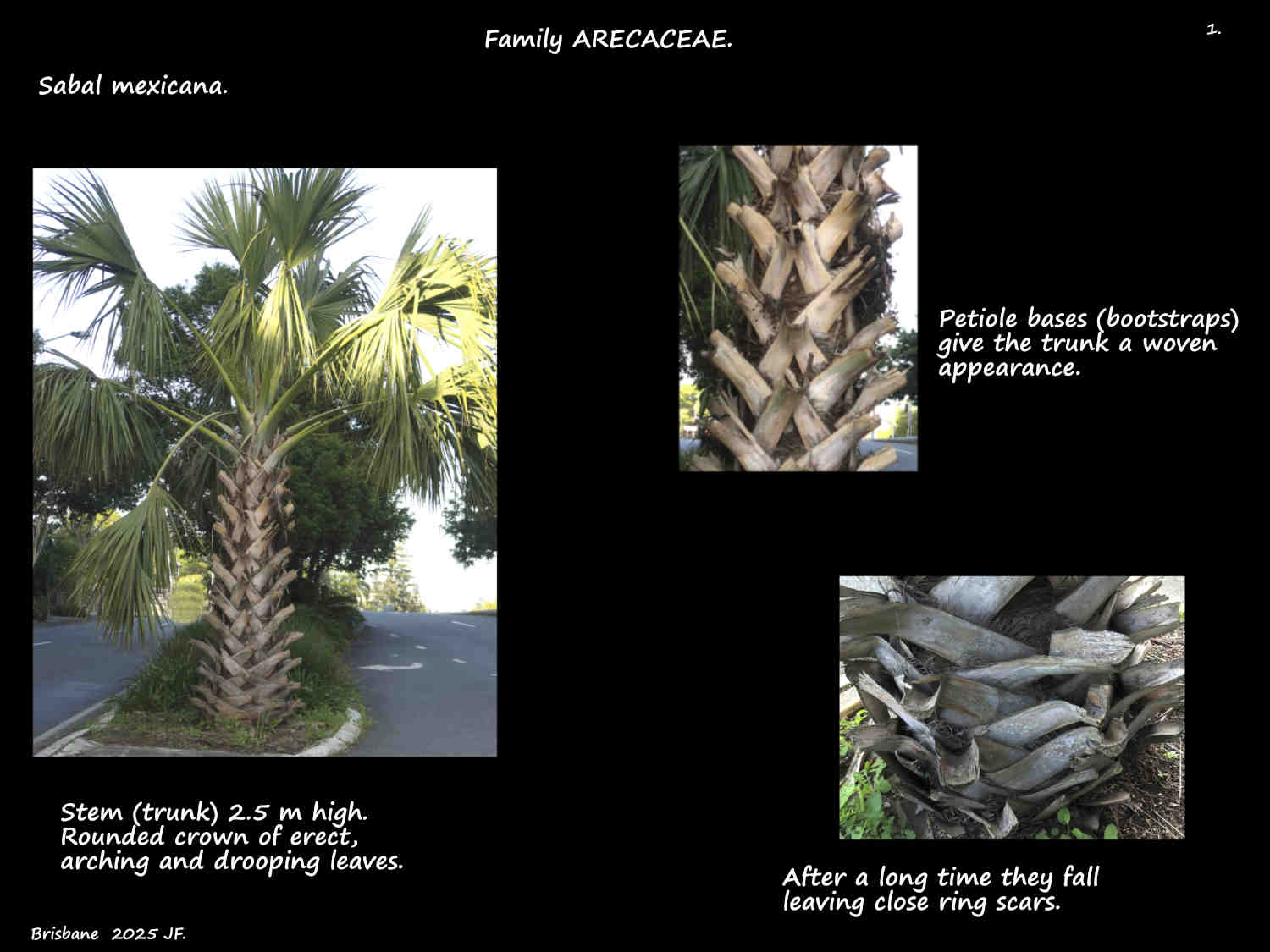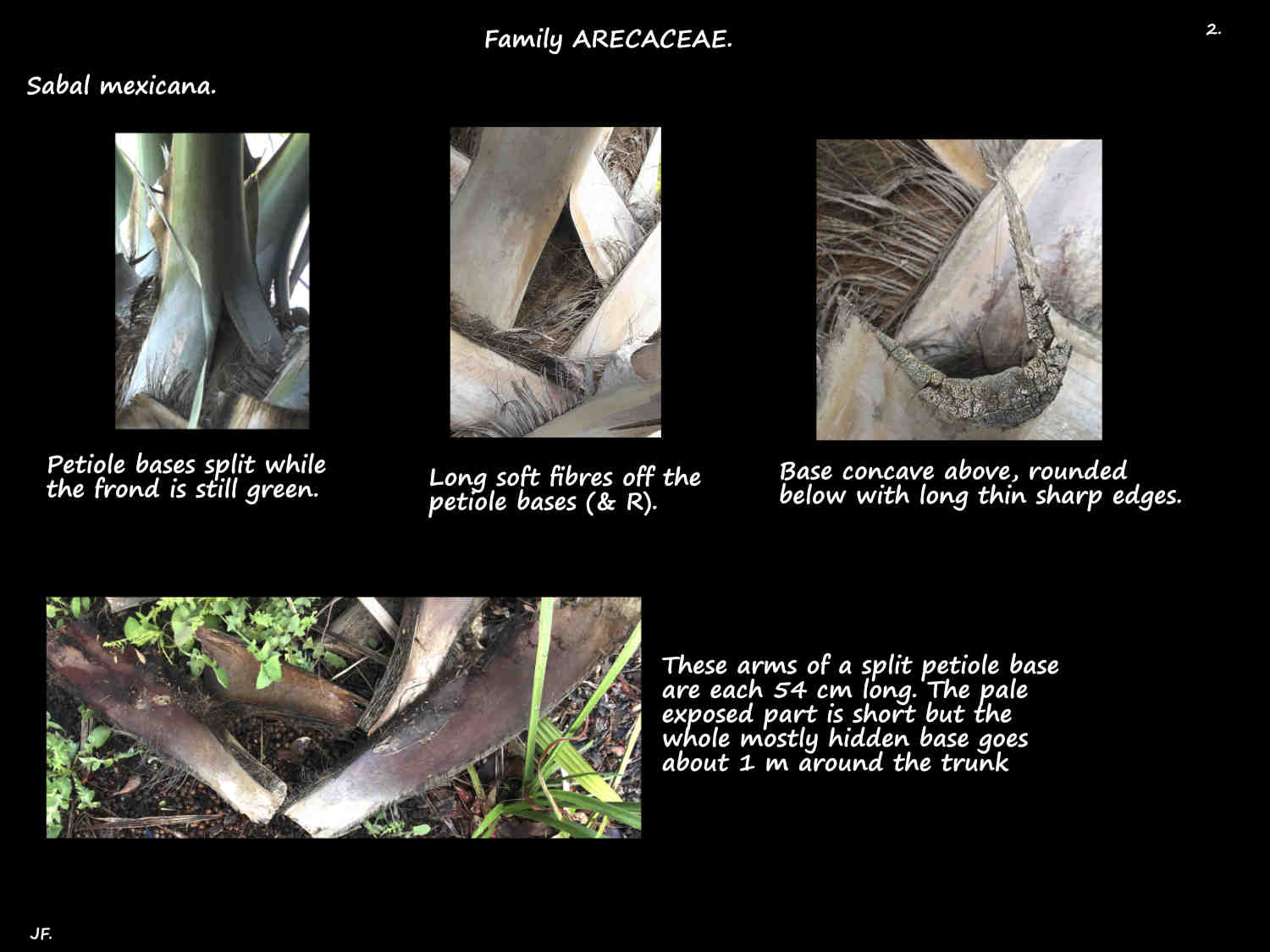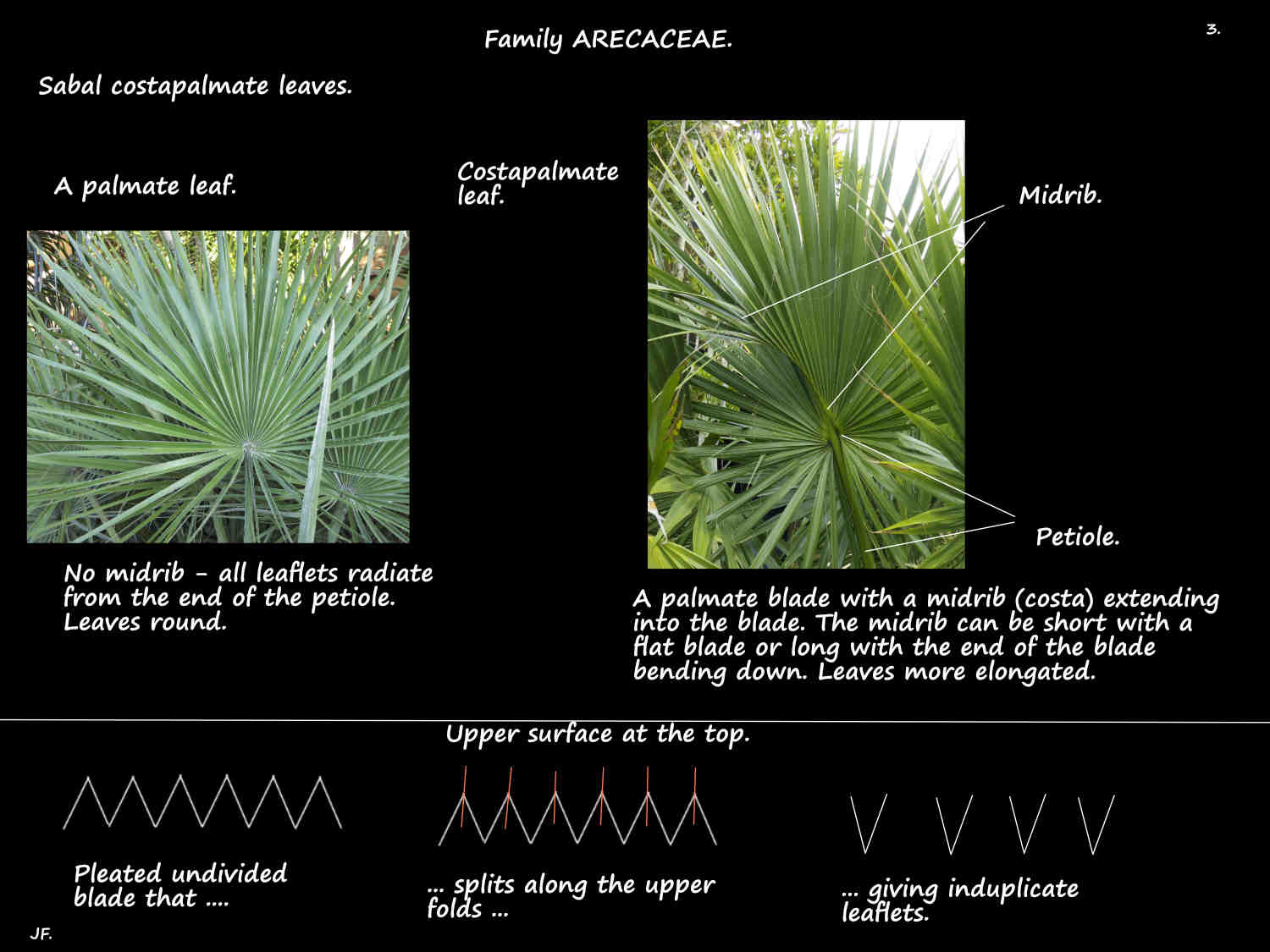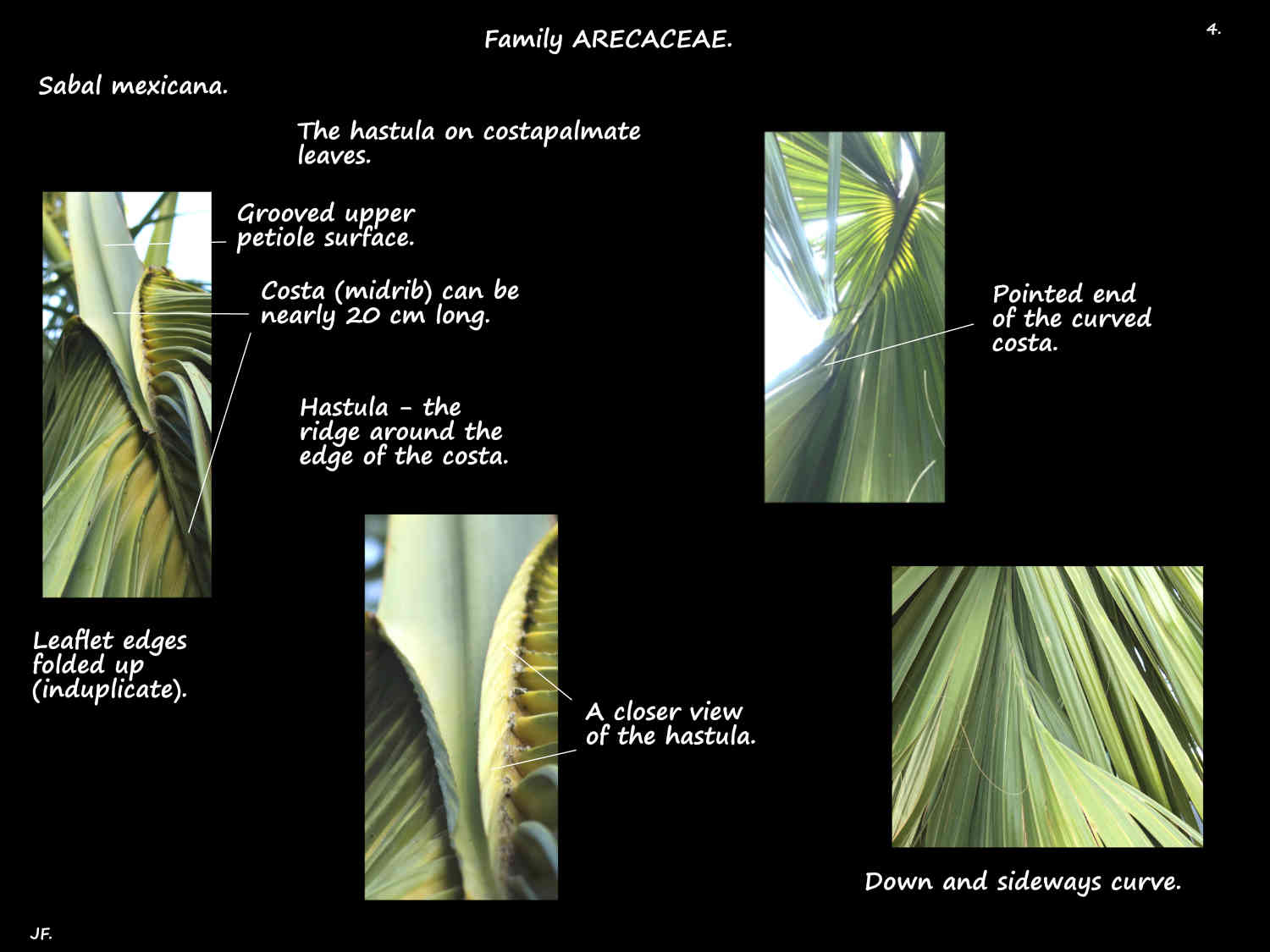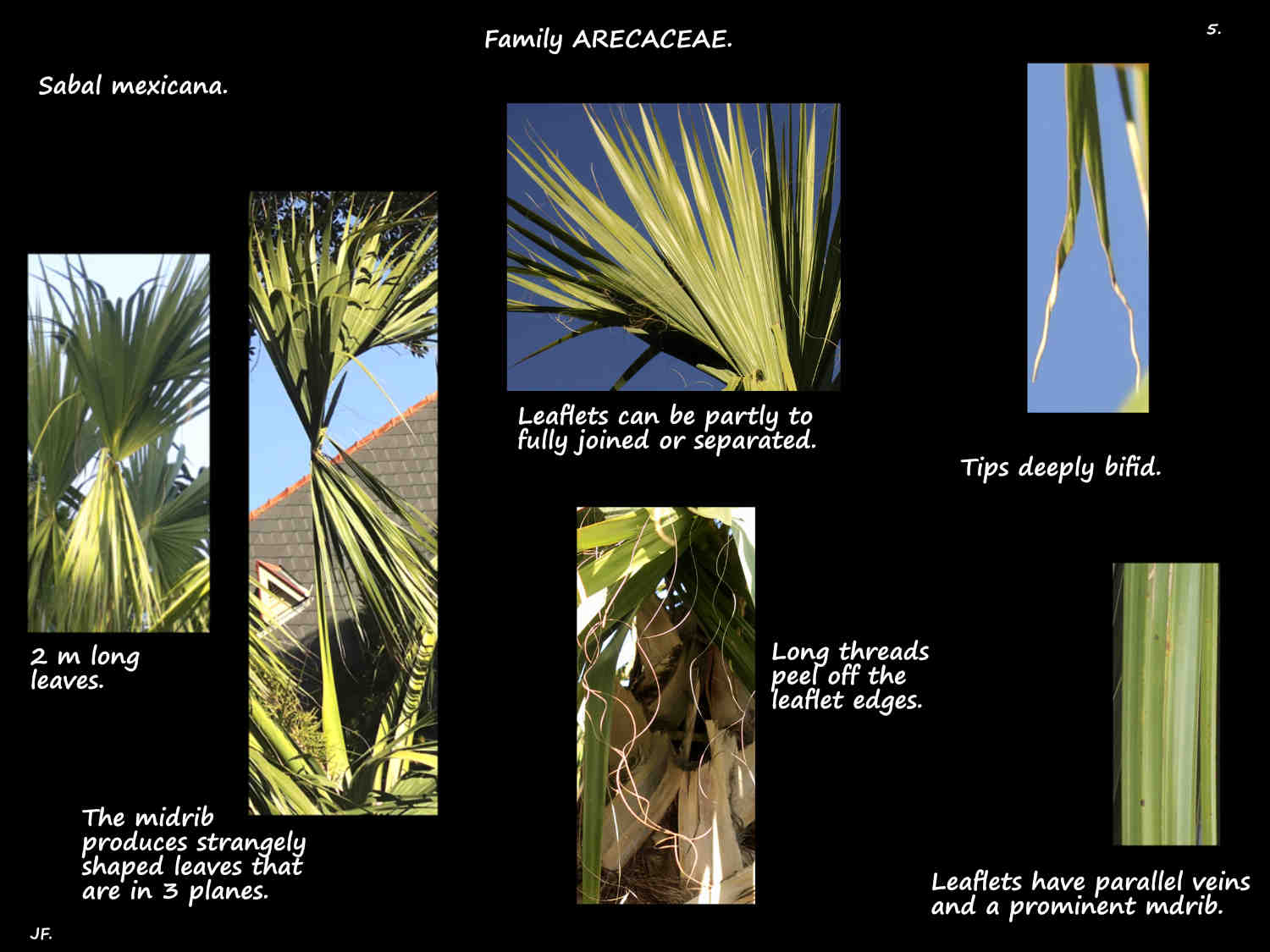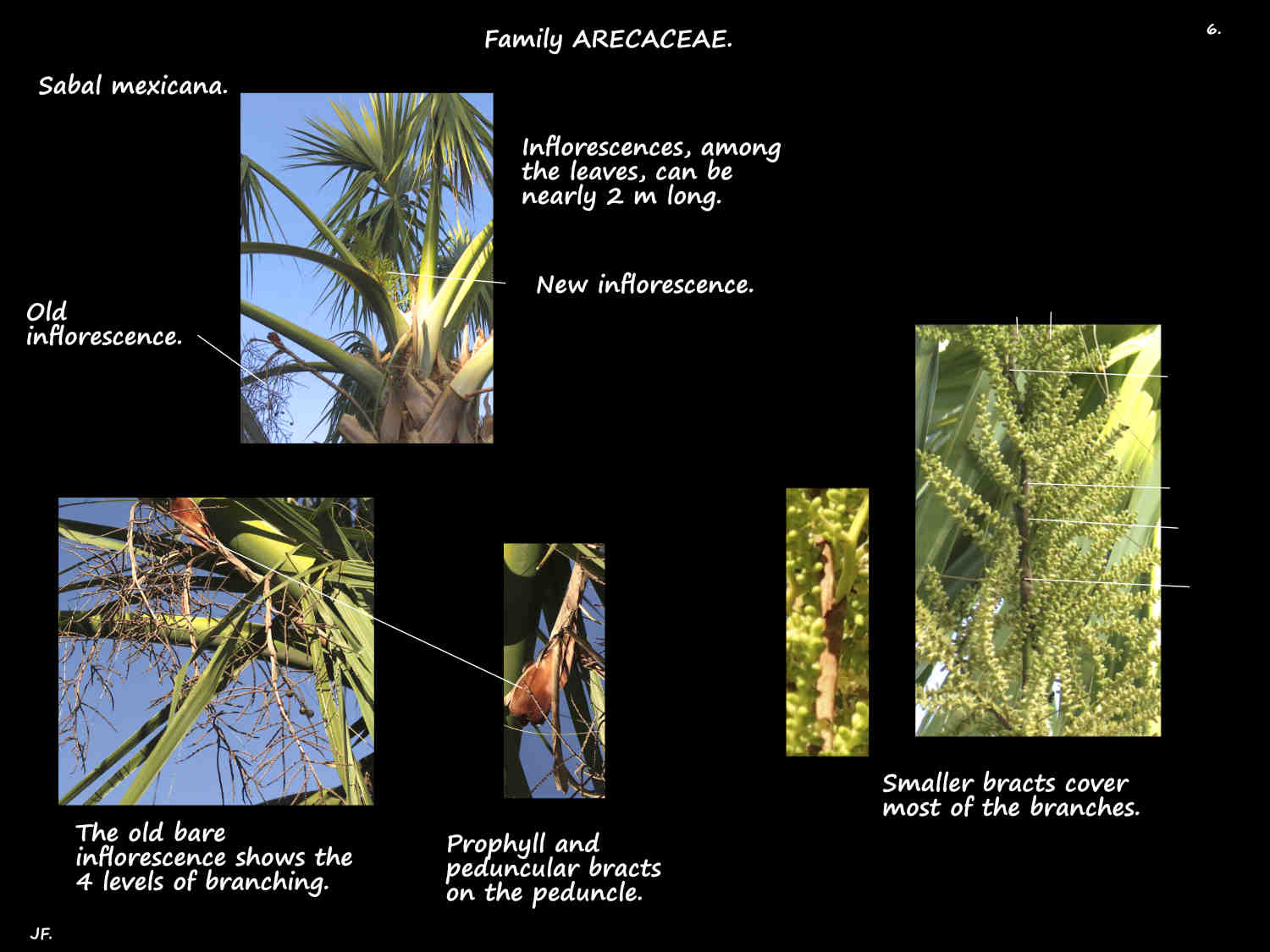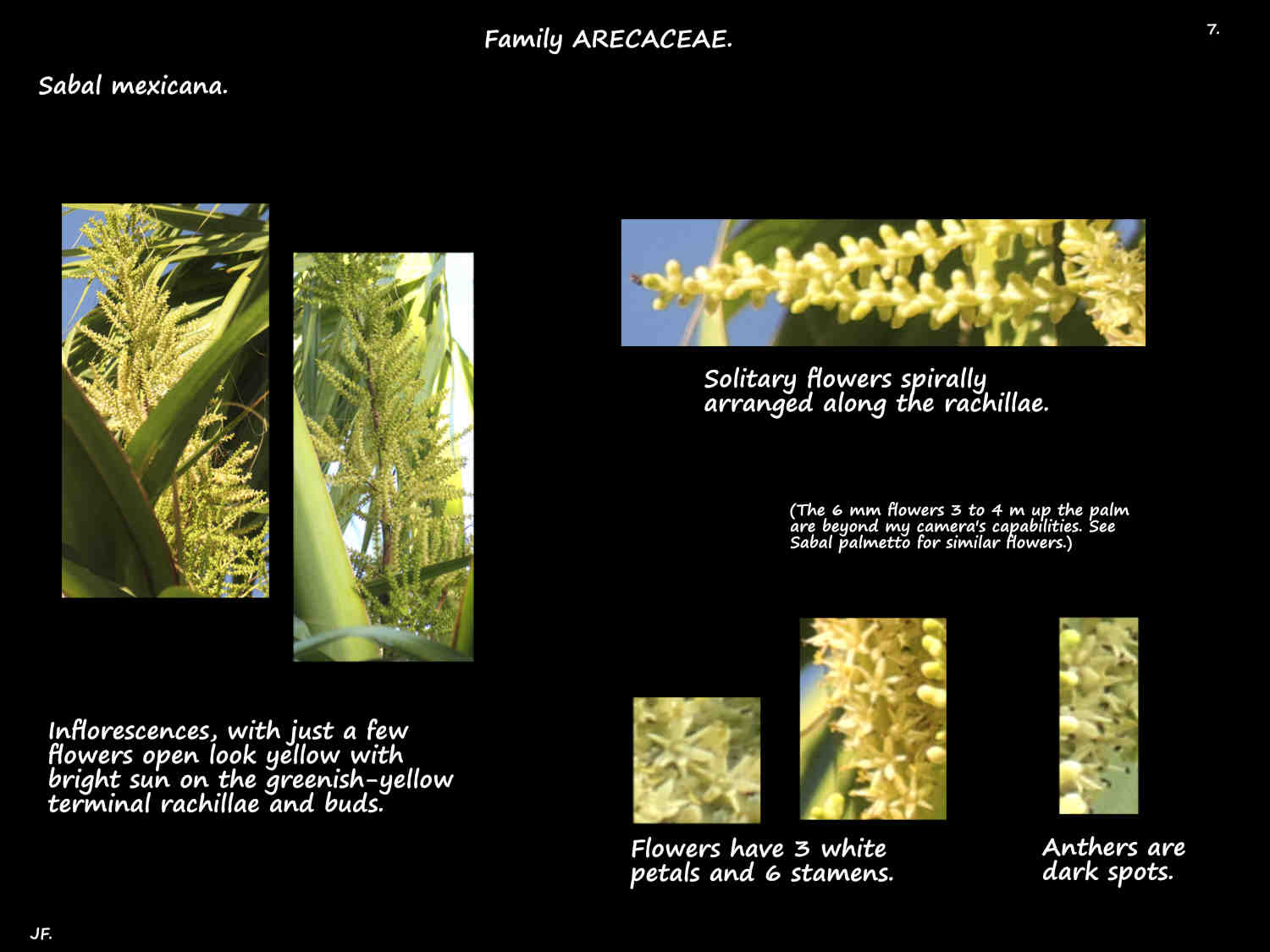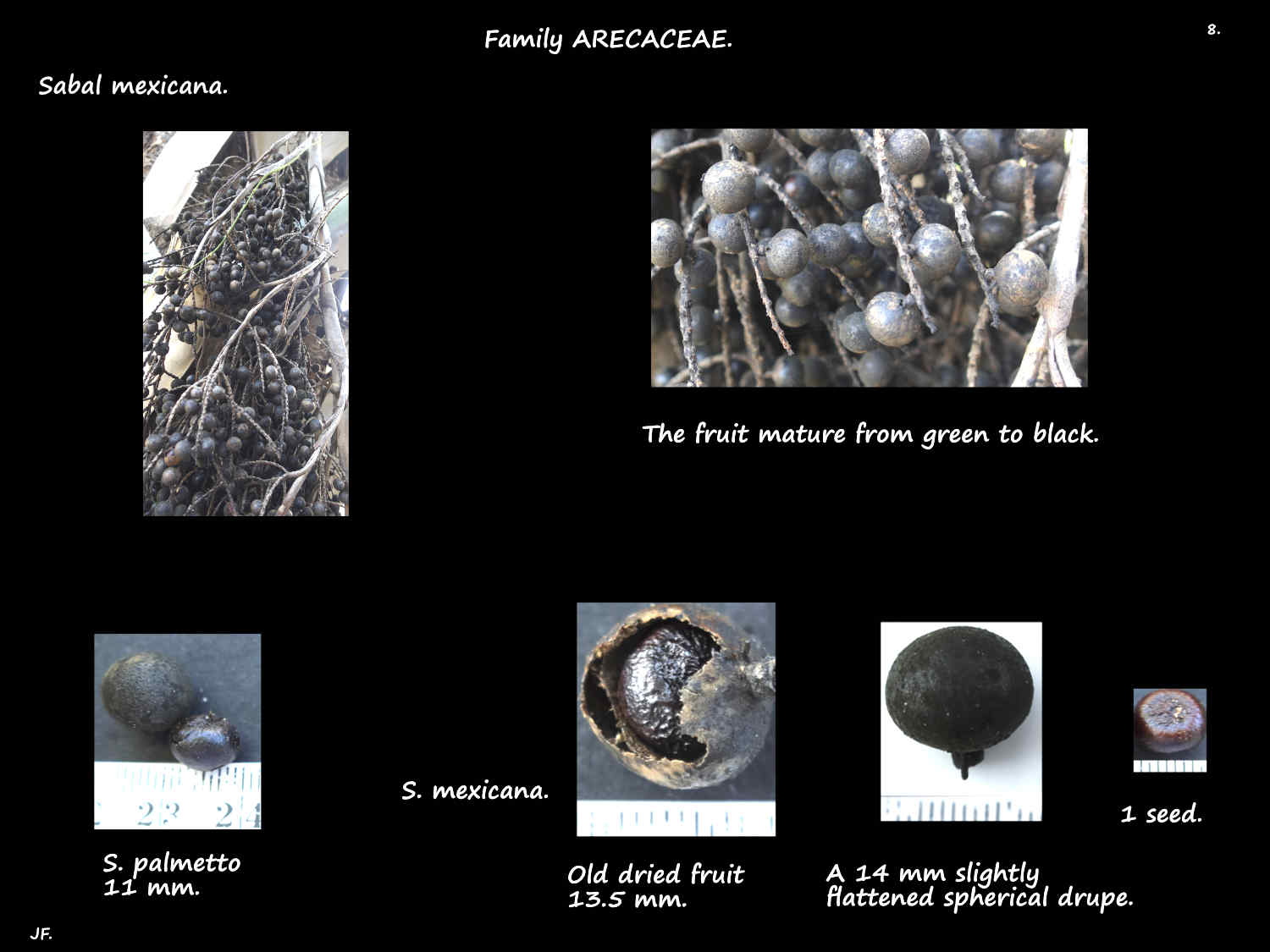Sabal mexicana.
The Mexican palmetto is from Nicaragua to southern Texas.
The solitary palms can grow to 15 or 20 m high but in cultivation are usually up to half that.
Trunks (stems) are around 40 to 50 cm across with old palms up to 80 cm.
Stems are covered with the wide petiole bases (bootjacks).
With the split in the petiole base they give the stem a woven appearance.
Petiole bases remain for a long time but fall off old palms.
When this happens the stem is brown and has flattish ring scars.
Mature palms, with up to 25 or 30 fronds (leaves) have a wide rounded crown.
Arching leaves have a grooved spineless petiole that can be well over 2 m long.
The blue-green blades are markedly costapalmate.
Unlike a typical palmate blade they have a midrib or costa.
Up to around 15 cm long with a pointed tip the costa has a strong downwards curve.
This puts the distal part of the blade into different planes from the flat base.
At the junction of the midrib and blade, on both surfaces is a raised ridge or collar – the hastula.
Blades can have over 100 segments or leaflets, up to 1 m long and 7 cm wide radaiting from the petiole tip and costa.
Segments, with upfolded edges (induplicate) typically have a deeply split (bifid) tip.
Long strands of fibres hang from the edges of the leaflets.
Inflorescences can be over 2 m long with some extending past the leaves.
They are a panicle with 4 levels of branching.
The peduncle has a basal prophyll and a number of peduncular bracts.
Similar and progressively smaller bracts cover most of the branches.
Solitary flowers are directly attached to the terminal rachillae.
The bisexual flowers, around 4 to 6 mm long have parts in 3’s.
They are very similar to those of Sabal palmetto (described and shown in more deail).
The calyx has a cup-like base with 3 small lobes and the corolla has a basal tube with 3 white lobes.
The 6 stamens are in 2 whorls and the ovary usually only has 1 ovule develop.
Fruit, a slightly flattened sphere or pear-shaped are typically 14 mm or more across.
The drupes, with 1 seed mature from green to black.
They are very similar to Sabal palmetto especially when young (short).
The height difference is only helpful with older Mexican palmettos with these being taller and hving a thicker stem.
The main difference seems to be the fruit size with 14 mm said to be the dividing line.
J.F.
